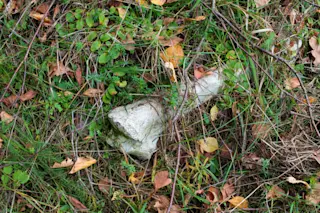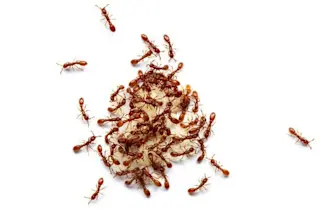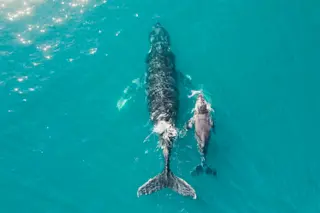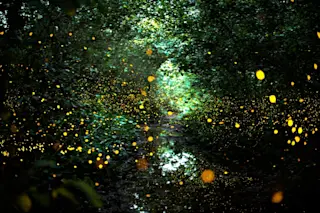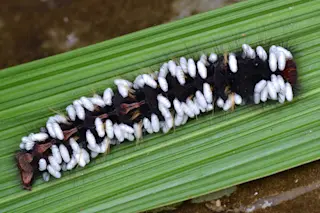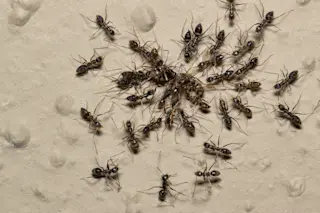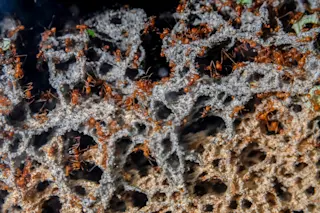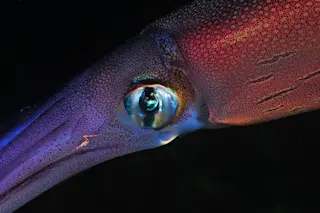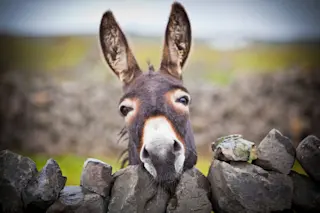“The purpose of man's life...is to become an abject zombie who serves a purpose he does not know, for reasons he is not to question.” - Ayn Rand Of all the cryptic, creepy and cruel creatures that emerge each Halloween, few captivate our imaginations like the living dead. Sure, they look dreadful, smell bad, and have the conversational skills of a well-adjusted slug, but despite their bad manners and constant lust for our brains, zombies have clawed their way into our hearts. It just wouldn't be Halloween without them. Like any good monster, the legend of the zombie is based in truth. According to Voodoo traditions, powerful spiritual men called Bokors have the power to kill a man and then raise him from the dead, turning him into a zombi, a mindless slave to the Bokor who created him. As outsiders began to look into the myths, they discovered that these sinister sorcerers use a chemical cocktail, including the deadly poison tetrodotoxin, to mimic the physiological signs of death. This zombi juice doesn't just slow the victim's heart rate - the toxic mix has lasting effects on the human brain including memory loss and delirium, making them ideal slaves. Once the target is declared dead and buried, the Bokor can dig up the grave and claim his zombi. While Bokors have been tinkering with brain chemistry to make the perfect zombie for hundreds of years, there are others that have been perfecting the art of zombification for much longer. Parasites are the Victor Frankensteins of the natural world. These mini-neuroscientists turn other creatures into mindless slaves, serving only to further the master's selfish goals. They do that voodoo better than we do, and they have for eons. In all of the cases I'm about to present, once the host is infected, they are the living dead. They have no hope of recovery, no chance for redemption. They will perform their acts as needed by their parasitic Bokor, and only once their bodies have served their function will the zombie be released into the sweet arms of eternity. The zombie, it stings While they might lack the lust for brains, parasitic wasps are the masters of neurological zombification. The emerald cockroach wasp, for example, turns its cockroach host into an ill-fated nanny. With carefully placed stings which inject a venom cocktail into the roach's brain, the wasp puts the roach into a zombie-like state where it happily follows its attacker to a dark chamber underground. The wasp then lays her eggs in the complacent roach and seals it in its tomb. Soon enough, the eggs hatch, eat, pupate, and emerge while the cockroach sits and waits for its body to be consumed.
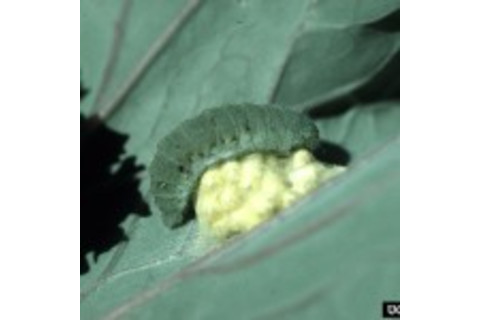
But perhaps it is the parasitic wasp Cotesia glomerata that most deserves the title of master. Females lay their eggs in unsuspecting caterpillars. When the larvae hatch, they literally eat their host from the inside out. But even more incredible is the caterpillar's reaction to such usury: the hapless host transforms into an undead bodyguard, protecting the young wasps even after they have gorged themselves on the caterpillar's internal organs. The mostly-eaten victim will even spin a silk web over the pupated wasps which just feasted on its flesh, a final act of devotion to its Bokors, before it dies. What chemical spell the larvae cast on their host to instill such loyalty remains a mystery. Fly me to the grave They might look like fruit flies, but Phorid flies are more than just a harmless pest - at least to the ants which serve as host for the fly's larvae. Phorid flies are the ideal Hollywood zombie parasite, complete with a hunger for neurological tissue. Gruesome as they might be, you gotta give the flies points for style.
Phorid fly larvae hatching from anant's head, from National Geographic
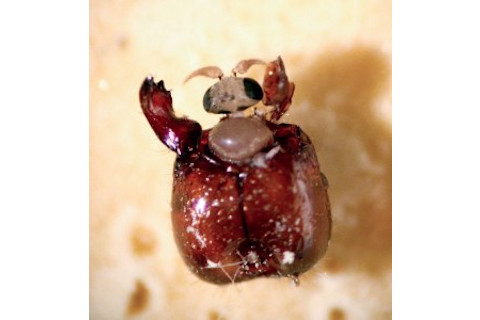
First, the momma fly injects her eggs into the body cavity of the ant host. Once they hatch, the larvae make their way to the ant's head, where they feed on hemolymph (ant blood), muscle, and nervous tissue (aka brraaaaaiiiiiinnnnssss). The larval flies will spend weeks inside the head of their host, controlling its behavior while snacking on its brains until they have completely emptied the ant's head. The ant, meanwhile, wanders around in a zombie-like state. When the young fly decides it is ready to pupate, it releases an enzyme which decapitates the ant by dissolving the membrane which attaches its head to its body. The larva pupates in the ant's disembodied head for about two more weeks, then emerges as a full-grown adult, ready to mate and find its own zombie host.
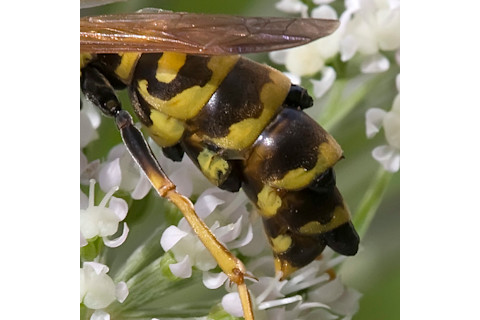
Other flies turn wasps into murderous zombie queens. Xenos vesparum larvae wait patiently until a wasp lands close by. When it senses its victim, the larva leaps onto the wasp and burrows through its exoskeleton into its abdomen, and begins feasting on the wasp's blood. As it grows, the larva starts to mess with the wasp's mind. The normally social wasp withdraws from its colony, and starts to act recklessly. Then, in early summer, the infected wasp just leaves its colony behind, and as if under some spell, travels to a meeting place. Soon, other parasitized wasps arrive, and the parasites begin to mate. The male flies emerge from the wasps and seek out the females which remain in their zombie hosts, granting the men access to the only part needed for reproduction. The wasps which were lucky enough to be infected by male flies die. Those infected with females, though, are still under the control of their parasites. They begin to act like wasp queens, gathering food and gaining weight. They then travel to sites where queens gather in the fall, and spend the winter in the lap of luxury among other wasp royalty. When the seasons change and the wasps emerge, the zombie queens go back to their colonies, carrying their deadly load of fly larvae. Everywhere they travel, larvae are left behind, waiting for the next unsuspecting wasp to land.
Rosemary's baby barnacle Most parasites are really, really small. But not all zombifying parasites are itsy-bitsy. Take, for example, the Rhizocephalans - the parasitic barnacles.

Yes, I did just say parasitic barnacle, although they don't look much like barnacles as adults. The adult parasites look like a sac where a female crab would have eggs. It's classified as a barnacle, however, due to its larval forms, specifically the cypris larvae, which neatly place it in the class Cirripedia. The barnacle's strategy is simple: find a crab. Stop her from shedding so she can't get rid of you. Tap into her nervous and circulatory systems and get comfortable. Grow. Sterilize her, so nothing competes for your living space. As you get too big to fit inside, pretend to be an egg sac. Have her bathe you in water, take gentle care of you, and feed you nutrients because she thinks she's pregnant. She'll even help you spread your larvae like they're her own eggs by fanning them into the water. However, there is an obvious problem. Not every crab is female, and thus predisposed to tending its eggs. So what does the parasite do when it accidentally infects a male crab instead? Well, it's simple, really. It makes it act like a woman. That's right - the parasite turns male crabs into transvestites. By altering hormones in the male crab's neurophysiology, it causes the male crab to act like a female one. Its abdomen flattens and widens, and it starts taking on the behavioral traits of a pregnant female. The male goes through the same process of nurturing and caring for its wee little parasite babies that the female would. The big boy will continue to love, adore and feed its little parasitic baby until he dies, just like a girl crab would. Swimming with the fishesSpinochordodes tellinii, also known as a hairworm, are free-living aquatic organisms as adults, who, as nematodes, eek out an existence in the mud. Their young, though, thrive on the flesh of crickets. Problem is, crickets don't always hang around wet places, and if the nematode were to leave its host when it's somewhere high and dry, it would die. What better way to ensure that it ends up where it wants to be than to drive the unwitting cricket host to suicide by drowning? How exactly the worm control the cricket's brain is unknown, but theories suggest that the parasite has developed a way to mimic natural chemical signals in the bug's brain. Analysis of the compounds of infested brains reveals heightened levels of neurotransmitters and chemicals responsible for movement and orientation, particularly with relation to gravity. These proteins are similar to the ones produced by the insect, but are not naturally occurring, suggesting that the parasite is able to produce and excrete its own chemical signals to screw with the cricket's mind. The end result of which, much to the parasite's joy, is that the cricket seeks out water and hops right in. More often than not, the act is fatal - crickets are terrible swimmers, and most who leap into the cool depths drown. This assisted suicide gives the parasite the chance to break free and wiggle its way easily down to the mud, where it continues its life cycle. video.google.com/googleplayer.swf?docid=-5220551385066049121&hl=en&fs=true style=width:400px;height:326px allowFullScreen=true allowScriptAccess=always type=application/x-shockwave-flash>
More than a fluke Trematodes, or flukes, are known for their complex life cycles which involve multiple hosts. Often, switching from host to host is facilitated by predatory interactions. Dicroelium dentriticum, a trematode which lives in the livers of sheep, is no exception. The trouble is, its intermediate host is an ant, and sheep aren't generally known for their hunger for ants. So how does a parasitic fluke get from an ant to a sheep?

Well, actually, it starts with a snail. The snail accidentally eats the fluke's eggs while going along its merry snail way, and the parasite hatches and develops in the snail's gonads. Eventually, the fluke is excreted in the snail's slime, which is conveniently eaten by an ant. This is where things get weird. Once infected, the ant continues about its business as normal - for the most part. By day the ant acts like an ant. But as the sun goes down, the parasite takes over. Every night, the zombie ant will leave its colony behind and search for a blade of grass. When it finds one, it climbs to the top, bites down, and waits until sunrise. Night after night, the ant will dutifully wait atop its blade until it gets accidentally eaten by a grazing sheep, thus completing its enslaver's life cycle. Who said zombies aren't fungis?

Even microscopic fungi get in on the zombifying trend. The fungus Ophiocordyceps unilateralis is yet another zombifying parasite targeting ants (they really get the short end of the zombie stick). It's all well and good to target ants, but a bit of a dilemma for the fungus arose from its choice of host: the fungus needs the perfect combination of light, humidity and temperature to survive, and those conditions don't exist on the ground. Ants generally live on the ground, and thus shouldn't be good housing for Ophiocordyceps. Not to worry, though - the fungus has engineered a mind-altering solution. Ants infected with Ophiocordyceps unilateralis find themselves compelled to amble far from their homes, climb trees or sprouts, and end up on the bottom side of a leaf where they clamp down their jaws and wait while the fungus eats them from the inside out. What's incredible is the precision with which these zombied ants choose their final resting place: they all choose to die on the vein on the bottom of a north-facing leaf approximately 25 cm above the ground in an area with 94 to 95 percent humidity and between 20 and 30 degrees Celsius - perfect conditions for the fungus to grow. After a few weeks, spores fall from the now fully eaten corpse to infect other ants and continue the fungus' life cycle.



